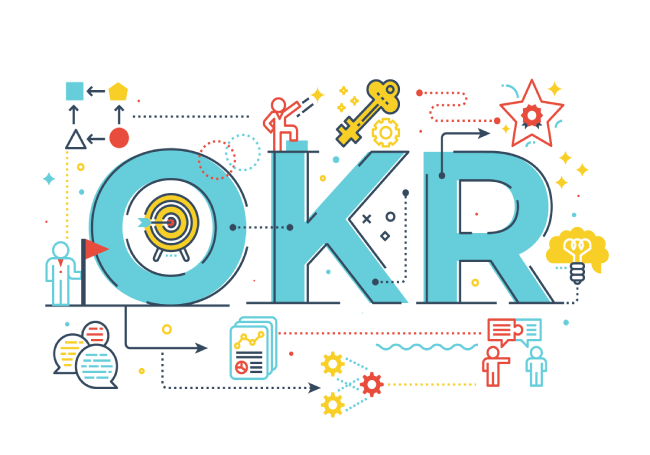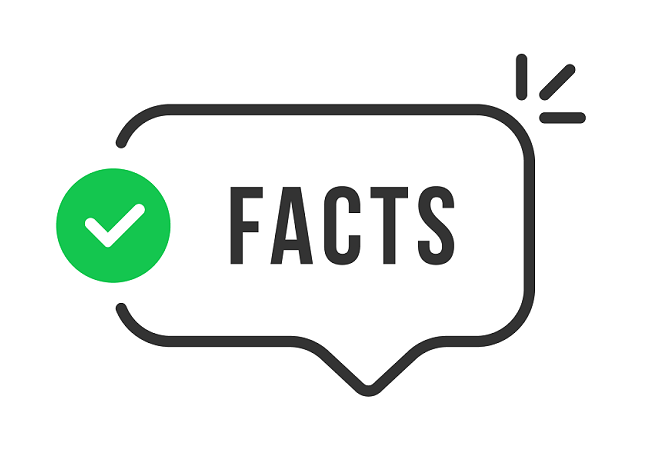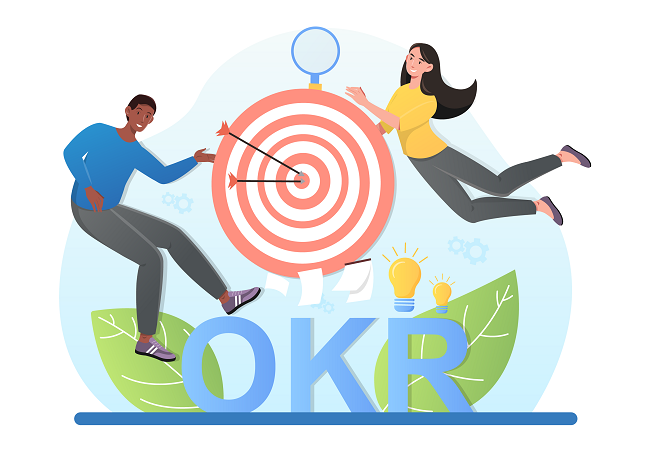OKR (Objectives and Key Results) is a very effective performance management system developed by Intel in the 1970s and gained popularity when Google started using it in 1999.
In the OKR approach, strategic priorities drive the objectives. Our goals express what we need to do much better to realize the strategic plan that will carry the company to its vision. Objectives are qualitative and rarely in metrics. While the balanced scorecard often moves directly from strategic priorities to metric targets, OKR seeks to answer the question of which systems and processes we need to improve by leaps and bounds.


Objectives show where we want to go, and key results show how we will know when we get there. Key results are metrics. There is no ambiguity about achieving or not achieving.
We recommend that you review our OKR Examples page for examples of objective and key results from different disciplines.
At the company level, identifying 3-5 objectives and 2-4 key results for each objective is common. However, it is crucial to agree no more than 6-7 key results at the individual level.
The OKR approach emphasizes the importance of the following five basic principles:
F.A.C.T.S.
- Focus
- Alignment
- Commitment
- Tracking
- Stretching


Focus :
PI is the acronym for the performance indicator. Any company can have dozens or even many more PIs. Unfortunately, very few are referred to as KPIs or key performance indicators. Only the PIs that significantly impact company results are supposed to be called KPIs. However, over time, companies have left PIs and started to refer to the vast majority of indicators as KPIs. OKR points out this mistake of the scorecard approach and recommends selecting a small number of objectives that, when achieved, make a big difference to results.
Alignment :
Successful OKR management relies on a solid future image and well-defined strategic priorities. Effective alignment requires the motivation provided by the vision and strategic plan. Therefore, frequent repetition of the purpose is essential. Even when senior management feels too repetitive, employees give feedback that the vision and strategy are not repetitive enough.


Internalization of the goals is crucial to ensure commitment to the objectives. However, the factor that has the most substantial impact on internalization is participation.
OKR recommends that more than half of the goals be set from the bottom up. Team members knowing each other’s goals contribute to a sense of being in the same boat. Being in the same boat requires employees to be accountable to other team members before their managers. Sharing the progress and results is done by looking into the eyes of the team members
Tracking :
While scorecard reviews are usually conducted once a month or less, OKR reviews are conducted weekly or more frequently. Team discussions are not longer than 10-20 minutes. Such a short follow-up time requires preparation. Since goal owners share the progress and outcome information up to date, the team focuses on only the necessary parts. If there is insufficient information about the challenges and causes, a plan is made for a different time to look for solutions.


Research in 1968 and later years showed that challenging objectives contribute much more to performance than easily achievable goals. In most cases, the performance score directly affects the salary or bonus in the scorecard approach, making the targets negotiable. Therefore, the “achievable” principle of SMART goals was transformed into “easily achievable” over time. The OKR approach suggests that targets should be challenging enough to be considered a success if the goal owner achieves 70%-80% of them. However, if most goals are fully attainable, the goal owners may have set the target values incorrectly.
Stiza goes far beyond offering you the opportunity to work with an OKR application on your OKR journey.
Its experienced team helps you identify the strategic priorities that will move you towards your vision and create the right goals to realize these priorities. It raises your awareness of your potential challenges and offers solutions in this critical step for alignment. In addition, Stiza supports the creation of an exemplary review culture around key results. Timely and effective reviews make it easier to achieve your goals.
Stiza recommends OKR Maturity Assessment once a year for companies implementing OKR methodology. The OKR maturity assessment provides verbal and written feedback to help middle management and target owners to improve themselves in performance management. With the assessment report, company management better understands their strengths and opportunities in OKRs and performance management.
Thus, Stiza makes visible metric data for each level in the organization, from which they can decide what to manage better in the future.


